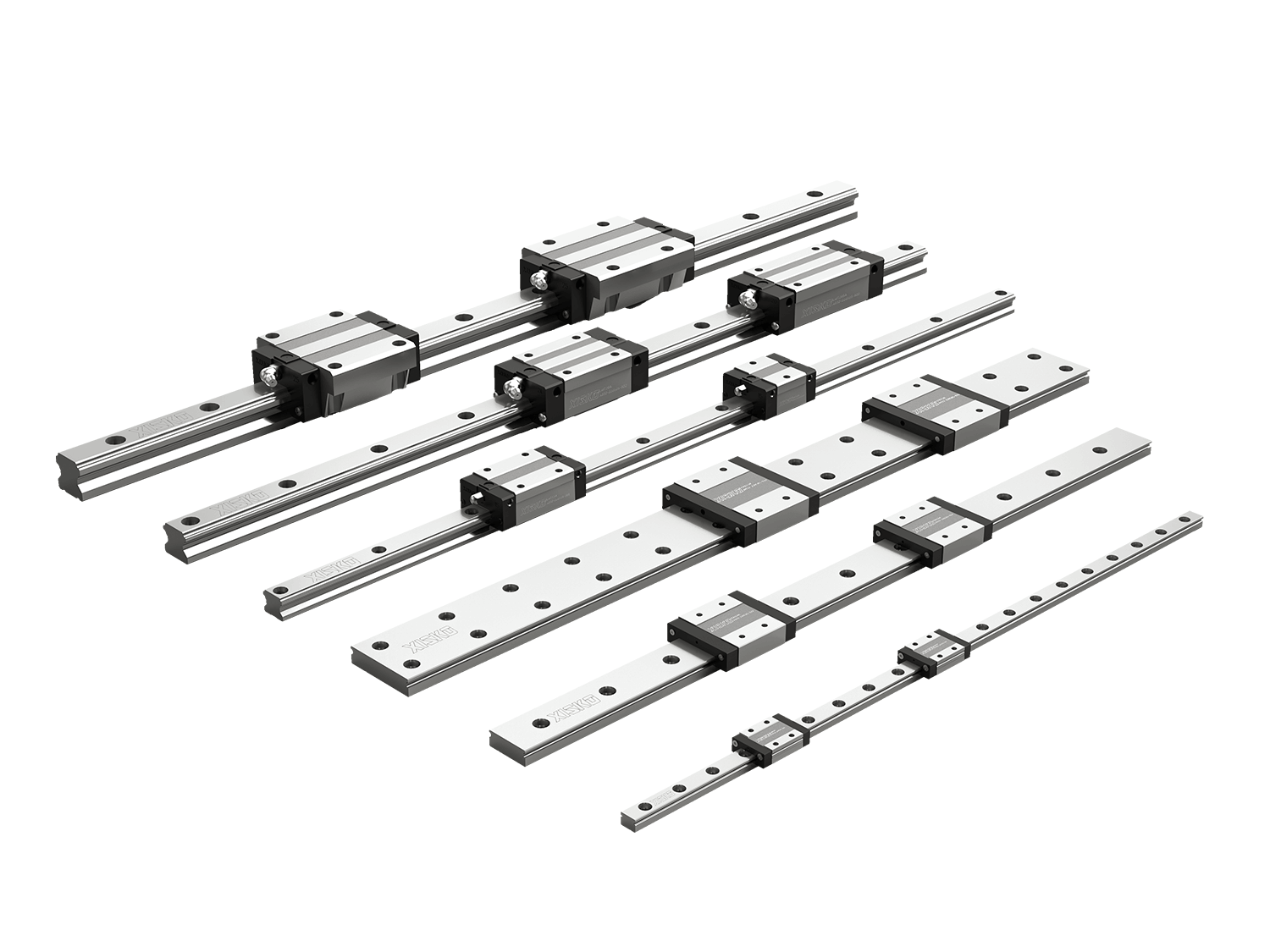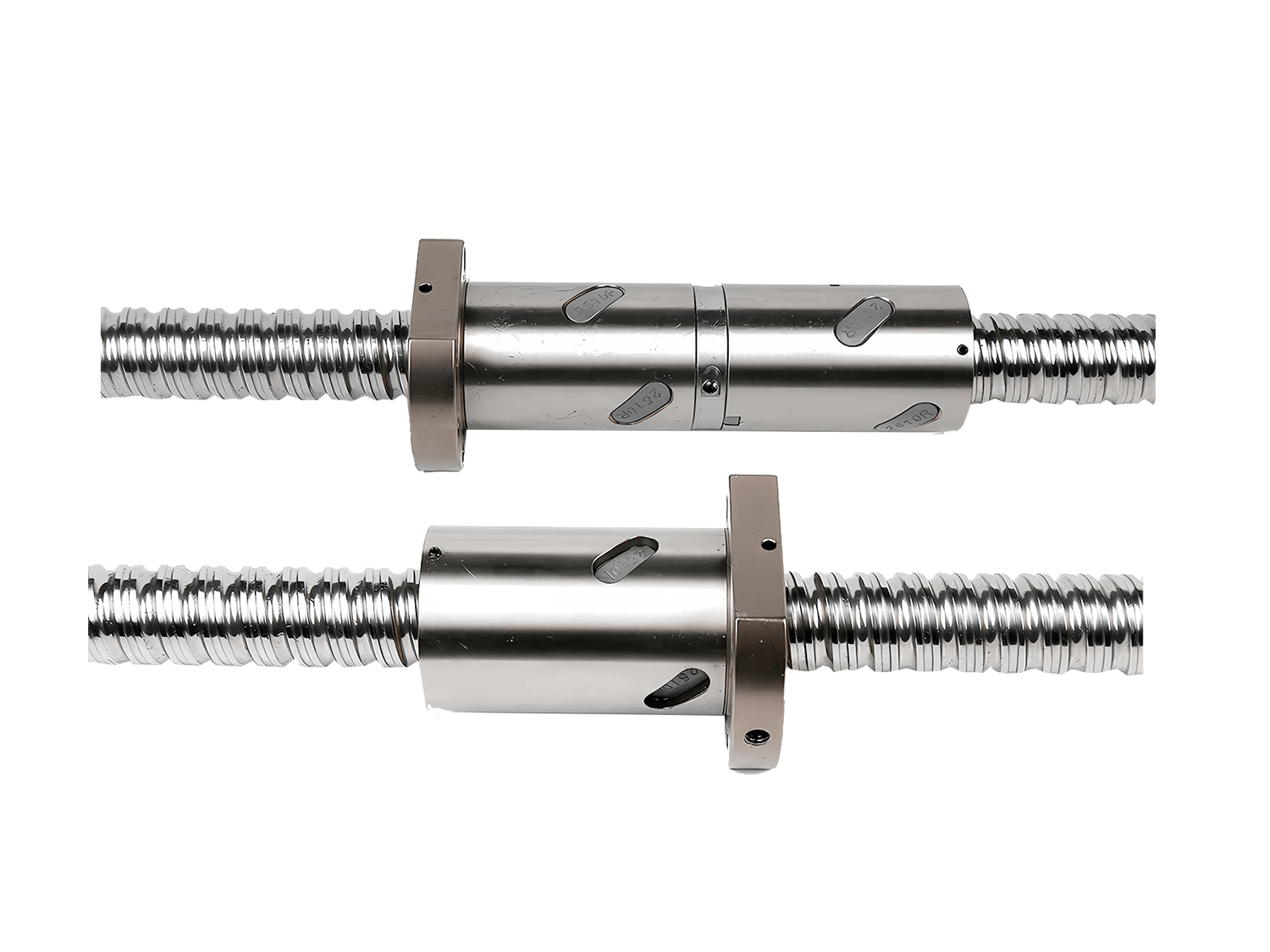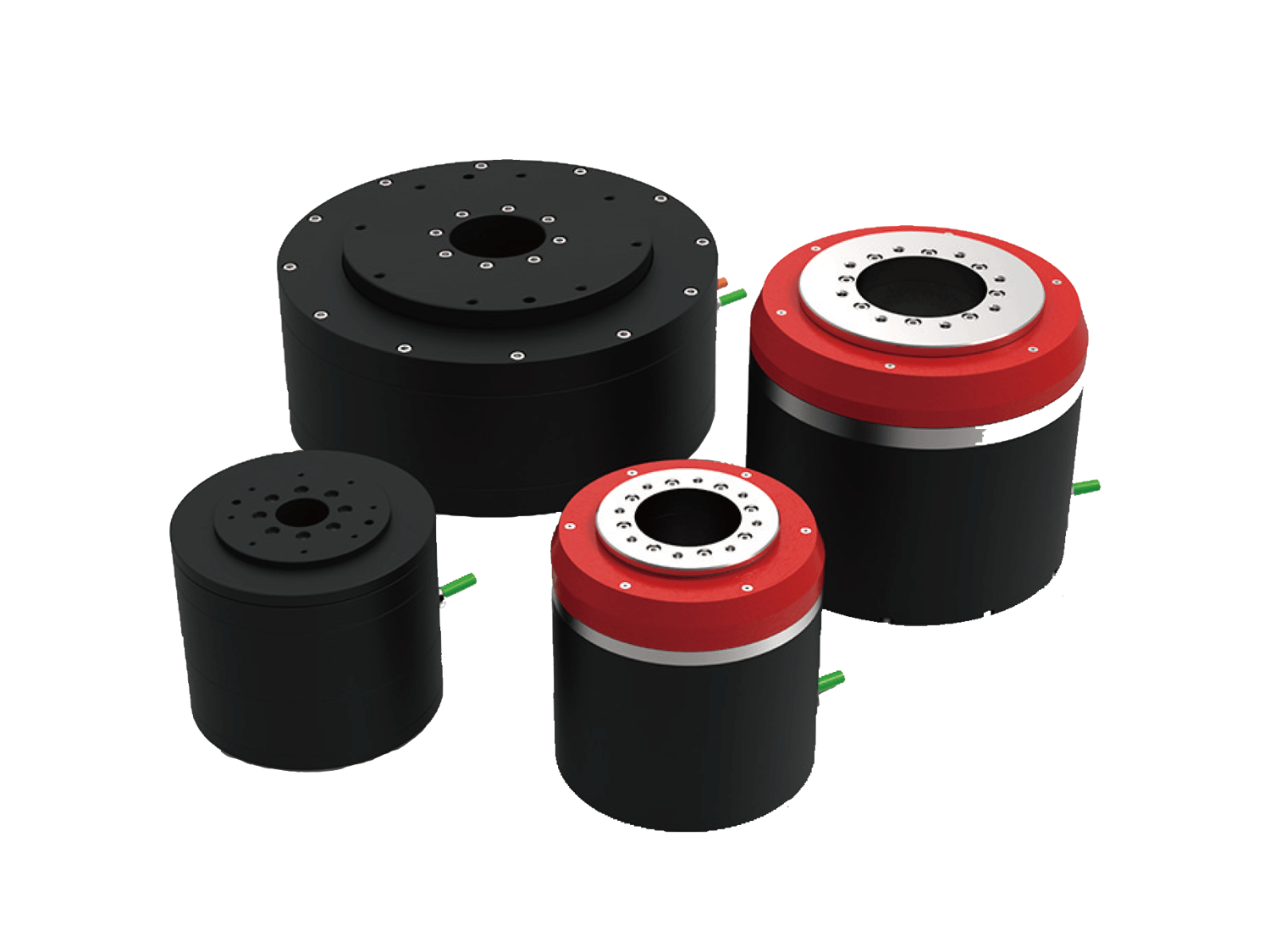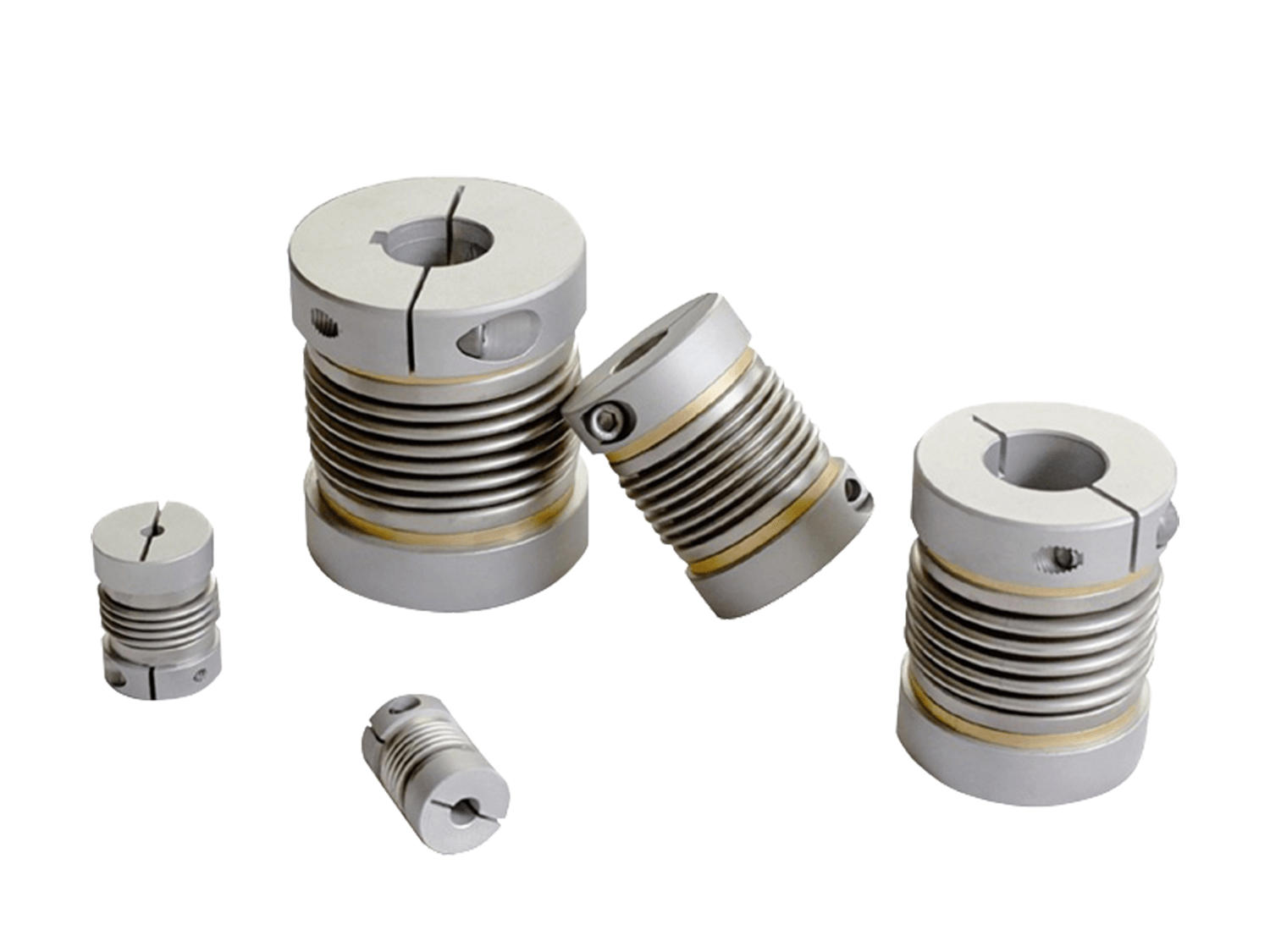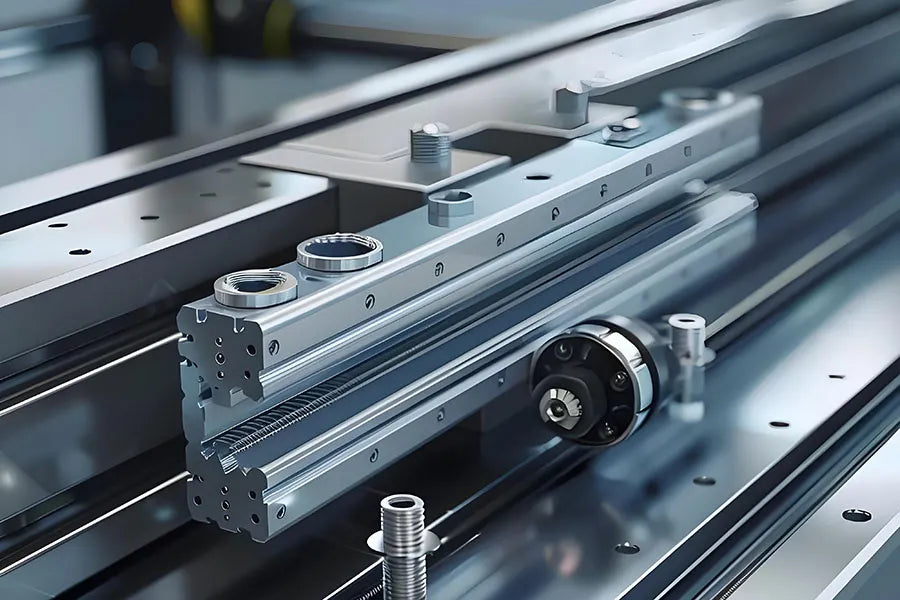Linear motion guides are widely used in mechanical manufacturing, automation equipment and precision instruments due to their high precision, high load capacity and stability. Correct installation of linear motion guides is essential to ensure the motion accuracy and service life of the equipment. This article will introduce the installation steps and precautions of linear motion rails in detail to help users achieve efficient and accurate installation.
1. Installation Steps
The installation method of linear motion guides must be set according to the use conditions of the machine, such as the degree of vibration and impact, the required walking accuracy and machine limitations.
1.1 Fixing Method
When the bed is subjected to vibration and impact, the linear motion rails and sliders are likely to deviate from the original fixed position, affecting the accuracy. To avoid similar situations, it is recommended to use the following four fixing methods to fix the slide rails and sliders to ensure the running accuracy of the machine.
- Fix with a pressure plate;
- Fix with a push-pull (Taper);
- Fix with a fixing screw;
- Fix with a roller (Needle Roller).
1.2 Slide Rail Installation
- Remove dirt from the bed assembly surface.
- Place the linear guide rail on the bed smoothly, and let the side reference surface of the guide rail touch the bed assembly surface.
- Test-tighten the assembly screws to confirm whether the bolt holes match, and roughly fix the bottom reference surface of the guide rail to the bottom assembly surface of the bed.
- Use the lateral fixing screws to press the side reference surface of the guide rail against the side assembly surface of the bed in sequence to determine the position of the guide rail.
- Use a torque wrench to tighten the assembly screws in sequence with a specific torque, and tighten the bottom reference surface of the guide rail to the bottom assembly surface of the bed.
- Install the remaining paired guide rails according to steps 1 to 5.
 Linear Motion Guides Installation Guide
Linear Motion Guides Installation Guide1.3 Slider Installation
Use the assembly screws to roughly fix the load platform on the slider, and use the fixing screws to tighten the side reference surface of the slider to the side assembly surface of the platform to determine the position of the slider.
Tighten the assembly screws to tighten the load platform to the slider in the order of 1 to 4 diagonals.
2. Notes on Linear Motion Rail Installation
- Before delivery, linear motion rails products are coated with an appropriate amount of anti-rust oil. Please wipe the anti-rust oil on the guide rail before installation and use before moving the slider.
- Confirm the reference rail and driven rail: When non-interchangeable linear guide rails are used in pairs, pay attention to the difference between the reference rail and the driven rail. The reference surface accuracy of the reference rail side is higher than that of the driven rail, and can be used as the support surface for bed installation. Moreover, when two rails are used in pairs, the reference rail number is an odd number, and the guide rail number of the driven rail is an even number.
- Confirm the installation reference surface
- Guide rail joints: When installing the guide rail joints, they must be installed in the order marked on the guide rail to ensure the accuracy of the linear guide rail. The joint mark is on the upper surface of the joint end. Please connect the two ends with the same joint mark together. It is also recommended that the positions of the matching rail joints should be staggered to avoid poor precision from the bed to the joint due to differences in different rails.
- When installing the linear motion guides, do not remove the slider unless necessary. If you need to remove or install the slider from the rail, please use the attached clamp rail.
- When installing the linear motion rails, do not arbitrarily swap the sliders of non-interchangeable rails to avoid affecting the precision.
- When installing the linear rail, please use a torque wrench and tighten the bolts in sequence according to the torque recommended by our company to ensure the straightness of the rail.
3. Notes on Maintenance of Linear Motion Rails
- The standard products of linear rails have been sealed with high-quality lubricants (lubricating oil or lithium soap grease) in the slider before shipment, after installation and trial operation. Before formal operation, please lubricate the slider again, and use the same lithium soap lubricant for lubrication.
- Before the standard linear guide rail is shipped, the surface of the guide rail has been coated with anti-rust oil; during installation, if the guide rail is cleaned, please apply a layer of appropriate lubricating oil around the guide rail surface again when the machine equipment is installed (please use compatible lubricants).
- Because the slider of the linear guide rail is composed of many plastic material components, please avoid contacting or soaking these components with organic solvents when cleaning to avoid damage to the product.
- Foreign matter entering the slider is one of the causes of slider failure and damage, which should be avoided.
- Arbitrary disassembly of the parts of the linear guide rail may cause foreign matter to enter the slider or reduce the accuracy of the linear guide rail. Please do not disassemble the linear motion rail at will.
- Improper tilting of the linear guide rail may cause the slider to slide out of the guide rail due to its own weight. Please keep the linear guide rail in a horizontal state when moving the linear guide rail.
- Falling or impacting the linear motion rail will damage its normal function. Please avoid improper falling or impacting the linear guide rail.
- For special environments, please use appropriate surface treatment or contact Simkawa.
- The maximum allowable ambient temperature for metal end cap linear guides is 150°C. In addition, the maximum allowable ambient temperature for general linear guides is 100°C.
Summary
Through the above steps and precautions, you can ensure the accuracy and reliability of the linear motion rails installation, thereby improving the overall performance and life of the equipment. If you have any other questions or problems with use, please contact Simkawa.
